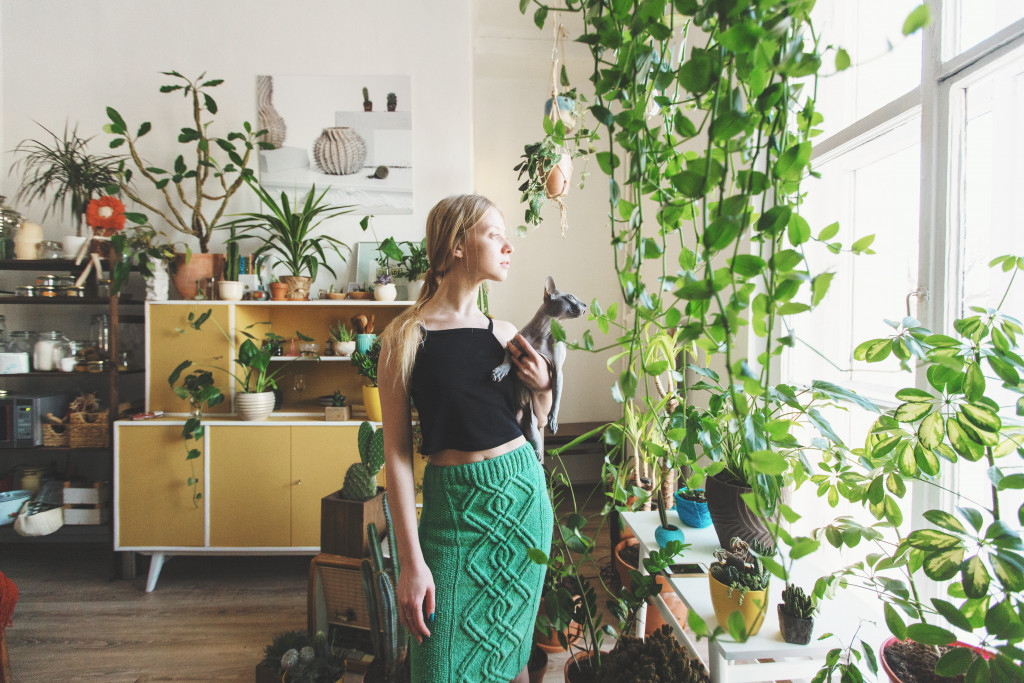Since most urban homes in overcrowded cities have plenty of space limitations, starting an outdoor garden may not seem a great idea. But holding off your gardening project can lead to unsatisfied cravings from having green space indoors.
But ever since the COVID-19 pandemic forced everyone to stay at home, urban dwellers found a way to make gardening possible. For those who live in the suburbs, lawn and yard care became a pastime. Gardening has become a popular trend for those who need some peace of mind in the middle of a health crisis. It also provided an opportunity to experience nature and try enriching recreational activities that can boost mental health.
But having a garden doesn’t require a green thumb or a large outdoor space to plant the greenery. In fact, whether you have a small space or large living quarters, anyone can have a lush garden right at their homes. In fact, growing an indoor garden is an efficient way to use the extra space while enjoying a beautiful modern landscape. So, if you want to spruce up your home, here are modern gardening ideas to start your indoor garden.
Choose edible plants that survive indoors
While most herbs and vegetables typically thrive in a well-lit outdoor garden, you need to find ones you can harvest indoors. One great example is lettuce. This vegetable ranks high among other edible plants that can thrive in an indoor space. They are also tasty and easy to grow. You can start by using a compost potting soil and heat mat to grow the seeds quickly.
Once you notice the sprouting seeds, remove them from the mat and place them beneath a grow light or fluorescent light placed three to four inches above the seedlings.
If you love salads, consider planting arugula since they prefer to thrive in a cool environment and germinates quickly. To get multiple harvests, cut off larger leaves and leave smaller ones. The same process also applies to kale. Since they grow incredibly large, sprinkle a few seeds in an average-sized pot with half an inch of soil.
But if you’re a fan of organic herbs, choose the ones that are easiest to harvest, such as mint, rosemary, cilantro, and basil. When planting herbs, combine seeds that require the same amount of water to save time on maintenance.

Low-maintenance plants as indoor decorations
If you need fresher air within your bedroom, installing a few planters can turn your personal space into a mini tropical forest. Most tropical plants prefer low-light environments, such as the monstera, colocasia, and other leafy tropical plants. You can also experiment on philodendron types if you’re looking for exotic, glossy leaves.
But for those who want to achieve unity, a collection of mid-sized plants helps occupy any awkward space in the living room. What is great about medium-sized plants is they make a larger impression than clusters of mini succulent displays.
For apartment dwellers who are short in space, installing a hanging garden is an efficient way to decorate the house with plants without sacrificing the counter space. When picking herbs for a hanging garden, pick varieties that need a similar level of care to save time. Bonsais and succulents thriving on droughty soil also make great hanging plants. Instead of the traditional planters, use kokedama soil for an added creative touch. Kokedama is a unique and versatile plant arrangement that uses a ball of soil made of moss.
For the kitchen, aside from the good ol’ herbs, use the extra space to hang leafy fronds on the wall or add small planters near the window. These green accents provide a fresh and lively display within the cooking space. Meanwhile, the bathroom is also a suitable location to stack small plant pots on the shelf or drape some moisture-loving tropical plants near the shower area.
Water thoroughly but less frequently
Most people assume that watering plants every day is the secret for a successful indoor garden, as it ensures the plants get adequate sources of water. Contrary to the belief, it is better to water them thoroughly but in infrequent intervals.
Overwatering plants is the ultimate killer of an indoor garden and the fastest way to waste gardening efforts. A great tip is to look for signs of moisture in the soil. If it appears dry, provide a good soaking.
The suggestions above prove that there is no reason to put off your indoor gardening project. Whether you have a big or small home space, you can start by keeping the garden simple by adding some potted plants or a mini edible garden. If you don’t succeed, you can always make a few adjustments to make your home an ideal environment for an indoor garden.
